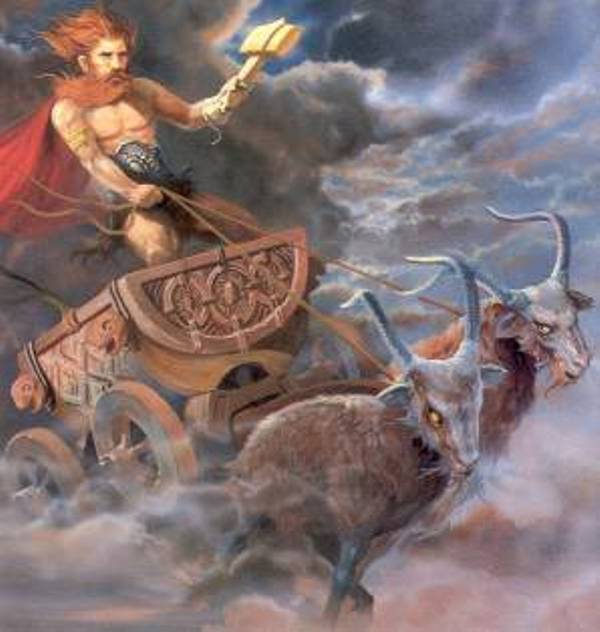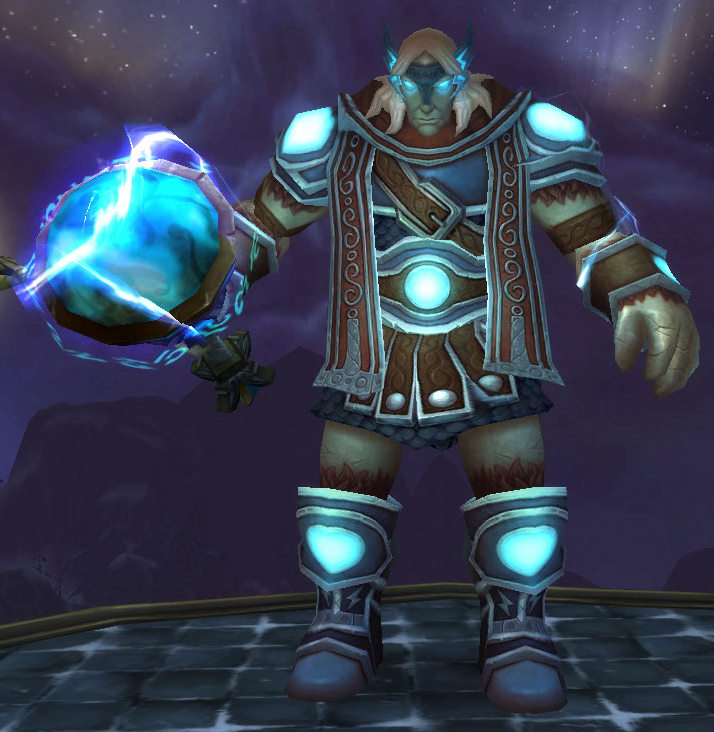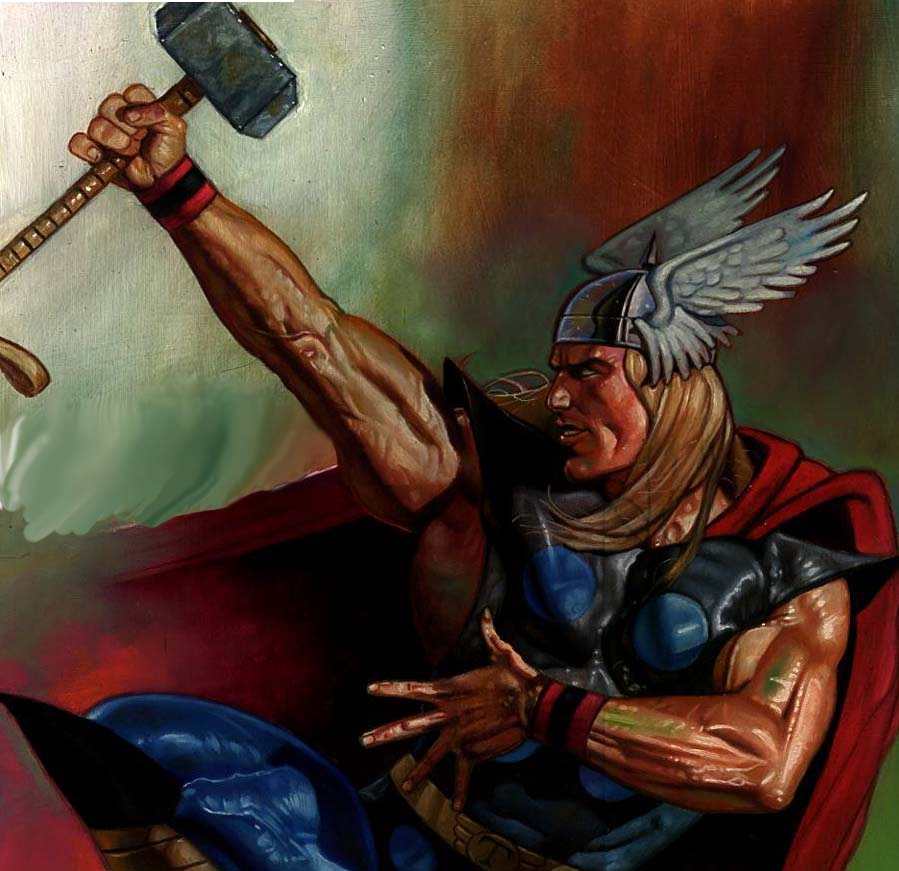Let's start by taking a look at
comics, shall we?
Obviously, there's Thor. I wish I
could quote Stan Lee and say “ 'nuff said”, but there's actually
more to talk about. In both the comics and the myths, Thor is the
Norse god of war and storms; Loki is a trickster trying to bring
about the downfall of the gods; the Bifrost is a rainbow bridge; and
Odin is the king of the gods. Odin is also the god of wisdom. In
the myths he has two ravens who fly around the world and tell him
everything that they see. One of my favorite parts about Marvel's
movie is that in the first Avengers, two ravens fly by when Thor and
Loki are arguing – a very nice reference to the original myths!
Although the comics and movie
adaptations are awesome, there are quite a few differences between
them and the original myths. For one thing, the mythological Thor
isn't all that bright. He mostly just wants to hit things with his
hammer.
Then you have Sif, who is a goddess of fertility and the
harvest – she's definitely not a warrior. Perhaps the biggest
difference is that Thor and Loki aren't actually brothers! In the
myths, Loki is the sworn blood brother of Odin.
Thor may be the most obvious
representation of mythology in modern comics, but he's not the only
one. Let's move away from him and take a look at the DC comics.
First, you have Wonder Woman. Wonder
Woman is an Amazonian princess. Some of her origin stories say that
Wonder Woman is the daughter of Zeus, king of the Greek gods and lord
of the skies. That's right – Wonder Woman is a demigod.
Then you have Superman. His story has
close ties to the Christian and Jewish faiths – and those ties were
written deliberately. There's a story in the book of Exodus about a
baby named Moses. During the time period in which Moses was born,
the Pharaoh of Egypt had enslaved the Jewish population. Their
numbers kept growing, and the Pharaoh feared revolt, so he ordered
all baby boys to be killed. To save Moses, his mother put him in a
basket and sent him floating down the river. He was adopted by the
Pharaoh's daughter and raised by a family not his own. Eventually,
Moses grows up to save his people.
Now let's look at Superman's origin
story. He was born on a world that's about to be destroyed. His
parents put him in a little space-cradle and sent him away to save
his life. The cradle carries him to Earth, where he is raised by an
adoptive family. Superman goes on to save the world – many, many
times.
(This photo was just too hilarious to not share!)
There's definitely some similarities
between the two stories – and, like I said, they were put there
deliberately. The writer and artist of the original Superman stories
were both Jewish. The character of Superman first appeared around
the time of World War II, when Jews were facing horrific persecution.
Superman's creators wanted to create a figure of hope for their
people, so they wove the story of Moses into the character of
Superman. Pretty cool, right?
Let's turn away from comics and take a
look at another aspect of popular culture. I'm a huge fan of video
games – how about you? Do any of you guys play World of Warcraft?
Mythology has influenced a lot
of video games, but WoW is a treasure trove of mythology. I can
think of about half a dozen different mythologies that show up in
World of Warcraft, and that's just off the top of my head – I'm
sure there are a lot more. One of those mythologies appears as soon
as you go to make a character – the druid.
Druids have their
origins as sort of priests in Celtic mythology. In the myths they
have close ties to nature, and are often depicted as shapeshifters.
In various stories druids turn into wolves, bears, boars, swans, and
a myriad of other things.
In World of
Warcraft the druid class' powers are tied to nature – sun, moon,
and plants. Like their mythological counterparts, druids are
shapeshifters. These are a few of their various forms.
Another
mythological influence in WoW can be seen heavily in the race of the
Trolls. The religion and culture of the Trolls are based on myths
from Latin America. An area in WoW called Zul'Drak provides the best
example of this. Take a look at the architecture: This is a temple
in Zul'Drak.
This is the Temple
of the Feathered Serpent, found in the Aztec city of Teotihuacan.
One of the most
prevalent figures in Latin American mythology is the god
Quetzalcoatl. He appears in the pantheons of several different Latin
American cultures, including the Aztec. Quetzalcoatl translates to
“the plumed serpent”, meaning a snake covered in feathers.
Creatures that match this description appear in many places in WoW.
Let's travel from
Zul'Drak and Latin America to the Storm Peaks and the Norse.
This
zone is perhaps the most obvious portrayal of mythology in World of
Warcraft – they barely even changed the names! First you have the
val'kyr, servants of the Lich King who raise the dead to join his
evil army. In Norse mythology the valkyrie are choosers of the
slain. They raise worthy dead warriors to a hall called Valhalla,
where they have a huge drinking party until the end of days.
Perhaps the most
amusing nod to mythology in this zone are the characters of Loken and
Thorim. Loken is a nefarious trickster trying to bring down Thorim.
Thorim has a hammer named Krolmir.
(Thorim with Krolmir)
(Thor with Mjolnir)
Hmm.
I'd like to look
at another genre influenced by mythology: Fairy tales.
How many of you
have seen or read Sleeping Beauty? You know the story: a girl is
cursed and falls into a 100-year sleep; a wall of roses grows up
around her; a dashing prince finds her and wakes her up with a kiss.
Now let me tell
you the story that I think inspired Sleeping Beauty – an old Norse
saga called the Story of Sigurd.
I mentioned
valkyries when I was talking about WoW. In addition to being
choosers of the slain, valkyries were also able to influence the
outcomes of mortal battles. When the Story of Sigurd begins, a young
valkyrie named Brynnhilda has been ordered by Odin, king of the gods,
to let one specific side win a battle. Instead, she allows the other
side to win.
Not a good mistake
to make when your boss is king of the gods.
To punish
Brynnhilda, Odin locks her away in a castle and curses her to sleep
until a man comes along and wakes her up. She will then marry this
man. Odin does take some pity on Brynnhilda – he raises a wall of
fire around the castle, so that only a truly brave man will be able
to reach her.
That's right.
Odin is Maleficent.
(They even have matching birds!)
Brynnhilda is
eventually woken up by a man named Sigurd, and the two fall in love.
Unfortunately, unlike in Sleeping Beauty, the duo do not live happily
ever after. Sigurd is given a potion that makes him forget about
Brynnhilda. He marries someone else, and his brother-in-law finds
and marries Brynnhilda. The jealous valkyrie talks her husband's
brothers into killing Sigurd. She then kills herself by jumping onto
Sigurd's funeral pyre.
Yeah, Norse
stories aren't really known for their happy endings. If it makes you
feel any better, a horse was found missing from the stables and a
stablehand said he saw Sigurd and Brynnhilda riding off into the
sunset together.
But I digress.
The Story of Sigurd differs vastly from Sleeping Beauty in its
ending, but the core concepts are pretty darn similar.
Let's
look now at one of my favorite parts of modern pop culture: Star
Wars.
Is anyone else
totally psyched for the new movie? Because I sure am!
Anyway, Star Wars
has some of its roots in Arthurian legend. You have a bunch of
knights running around trying to save the galaxy from evil. They
help the innocent, protect the weak, and are generally seen as
virtuous – at least, until they turn evil themselves. That's
pretty similar to King Arthur and his knights, right?
Well,
Star Wars also has heavy ties to Buddhism. Let's take a look at the
Jedi Code, which states:
There is no emotion,
there is peace.
There is no ignorance,
there is knowledge.
There is no passion,
there is serenity.
There is no chaos,
there is harmony.
There is no death,
there is the Force.
In
Buddhism there is a concept called The Four Noble Truths. These
truths state that:
- There is suffering.
- Suffering is caused by desire and ignorance.
- Suffering can be ended by putting aside one's desires.
- The fourth noble truth details an Eightfold Path to enlightenment, which leads to the end of suffering and desire. This path includes moral conduct, meditation, and wisdom.
I see a lot of Buddhism in the Jedi Code. If you give up emotion,
you will not suffer, so you will be at peace. Ignorance can cause
suffering, so it follows that knowledge can prevent suffering.
Without passion, one will not desire, so one will not suffer from
their desires.
So...I guess the Jedi are a sort of Knight/Buddhist monk hybrid?
I hope you guys found this interesting! I really love seeing how
mythology influences pop culture, and the way that pop culture adapts
mythology to suit its own needs. What have you watched (or read, or
played, or heard) that you can see mythological ties in?

















No comments:
Post a Comment